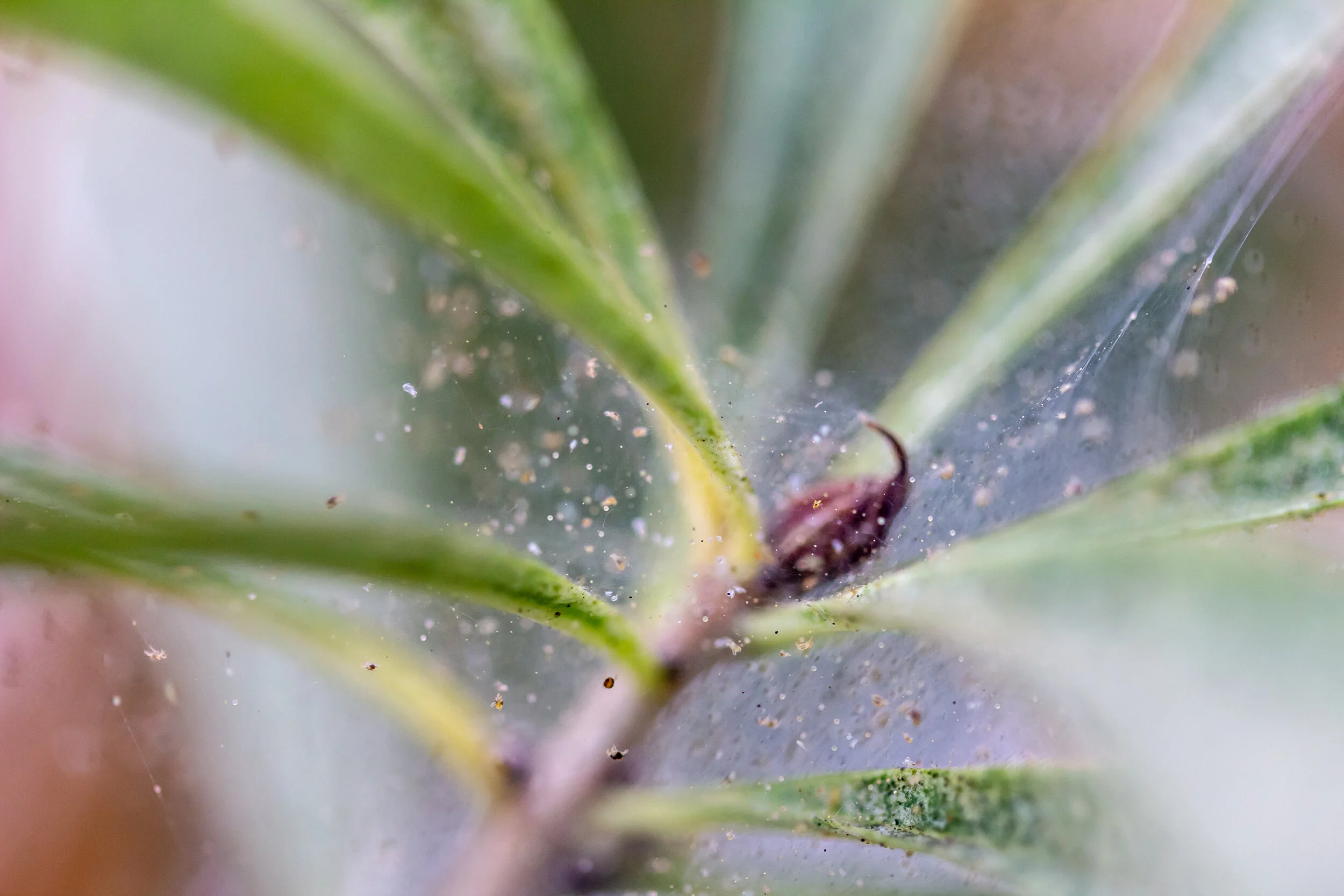Spider Mites
Spider Mites are a common pest most often prevalent in the winter when the heater is on. They prefer dry and hot air and dusty leaves. A member of the arachnid family, spider mites are incredibly small, reddish-brown or pale, and oval. They live in colonies and create fine webbing. You will most often find them on the underside of the plants leaves and axis where they feed on the plant juices. Spider mites can lay 20 eggs per day. The eggs hatch 3 days after being laid and mature in 5 days. Their total lifespan is 2-4 weeks.
Because they are so small it can be hard to determine if you have spider mites until the infestation has become heavy. The first signs are small lightly colored dots along the leaves, faded or bronze colored leaves, or completely yellow leaves. You will also notice webbing and often see this before you see the spider mites. Once you do notice webbing it is usually and indication of a heavy infestation. You will often find spider mites are attracted to palms so if you have a palm of any variety, be sure to check for spider mites regularly.
The best care is always prevention. Check your plants every time you water or dust them. Check the leaves, underside of leaves, axis, everything. This way if you do end up getting pests (chances are you will at some point because nature can’t be controlled) you will know as soon as possible and can intervene. Pests are far easier to eradicate when there’s only a small amount compared to a heavy infestation.
Spider mites love hot and dry air and dusty plants so a good way to prevent them is to keep your plants dust free, well hydrated and increase the humidity. A great way is to mist your plants daily. This keeps the dust down and also raises the humidity every time you mist.
If you do all of this and still get spider mites, here are some remedies you can try:
Spray down all of the foliage and stems with neem oil. This is a natural product and is great for pest control.
Use a strong stream of water to blast them off. This will decrease their numbers on the plant and help to disrupt the cycle.
Remove heavily affected parts of the plants with sterilized shears.
Wipe the plant down with soapy water, wait 30 minutes, then rinse with clean water.
Mix hydrogen peroxide with water in a 1:1 ratio and liberally spray down leaves and soil. This kills the adults and eggs.
Manually remove spider mites with cotton swab dipped in rubbing (isopropyl) alcohol for lighter infestations. This kills the adults and eggs.
Repeat whichever of these treatment plans you choose weekly until the spider mites are gone.
Spider mites can be difficult to treat once heavily infested. If these remedies don’t work there are other pesticides and ways to treat them but they can be harsh on the plant and harmful to pets and people so carefully follow the directions and use with caution.
If nothing works and you have to throw away the plant, don’t be too hard on yourself. Sometimes it happens no matter what you do and remember, it happens all the time in nature. Just brush it off as a learning experience and try again!


